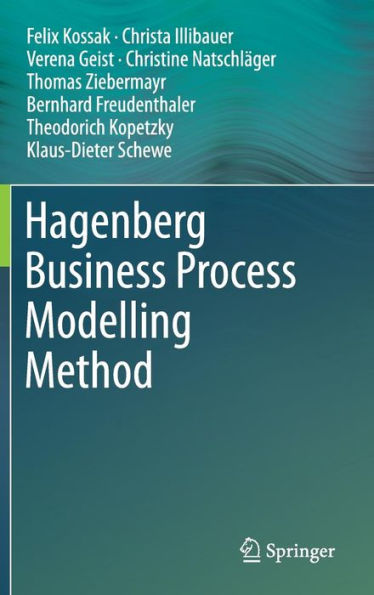Based on a purified Business Process Model and Notation (BPMN) variant, the authors present proposals for several important issues in BPM that have not been adequately considered in the BPMN 2.0 standard. It focusses on modality as well as actor and user interaction modelling and offers an enhanced communication concept. In order to render models executable, the semantics of the modelling language needs to be described rigorously enough to prevent deviating interpretations by different tools. For this reason, the semantics of the necessary concepts introduced in this book are defined using the Abstract State Machine (ASM) method. Finally, the authors show how the different parts of the model fit together using a simple example process, and introduce the enhanced Process Platform (eP2) architecture, which binds all the different components together. The resulting method is named Hagenberg Business Process Modelling (H-BPM) after the Austrian village where it was designed.
The motivation for the development of the H-BPM method stems from several industrial projects in which business analysts and software developers struggled with redundancies and inconsistencies in system documentation due to missing integration.
The book is aimed at researchers in business process management and industry 4.0 as well as advanced professionals in these areas.
Based on a purified Business Process Model and Notation (BPMN) variant, the authors present proposals for several important issues in BPM that have not been adequately considered in the BPMN 2.0 standard. It focusses on modality as well as actor and user interaction modelling and offers an enhanced communication concept. In order to render models executable, the semantics of the modelling language needs to be described rigorously enough to prevent deviating interpretations by different tools. For this reason, the semantics of the necessary concepts introduced in this book are defined using the Abstract State Machine (ASM) method. Finally, the authors show how the different parts of the model fit together using a simple example process, and introduce the enhanced Process Platform (eP2) architecture, which binds all the different components together. The resulting method is named Hagenberg Business Process Modelling (H-BPM) after the Austrian village where it was designed.
The motivation for the development of the H-BPM method stems from several industrial projects in which business analysts and software developers struggled with redundancies and inconsistencies in system documentation due to missing integration.
The book is aimed at researchers in business process management and industry 4.0 as well as advanced professionals in these areas.

Hagenberg Business Process Modelling Method
259
Hagenberg Business Process Modelling Method
259Hardcover(1st ed. 2016)

Product Details
| ISBN-13: | 9783319304953 |
|---|---|
| Publisher: | Springer International Publishing |
| Publication date: | 04/27/2016 |
| Edition description: | 1st ed. 2016 |
| Pages: | 259 |
| Product dimensions: | 6.10(w) x 9.25(h) x (d) |
